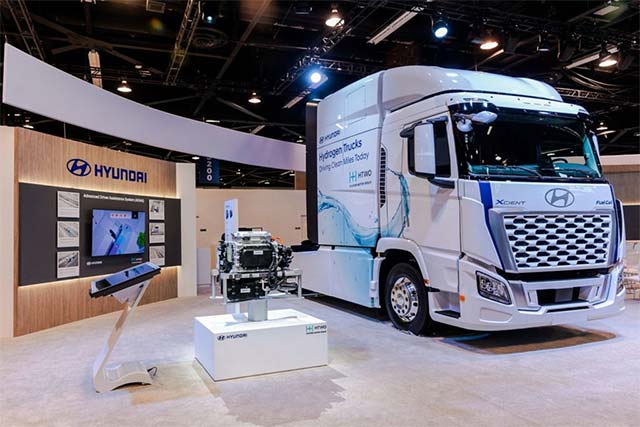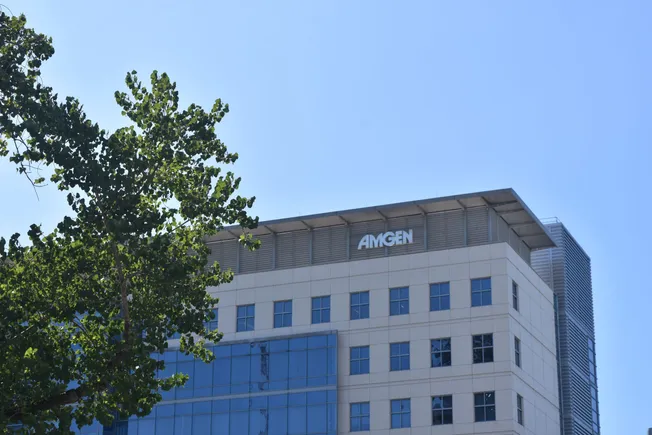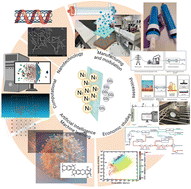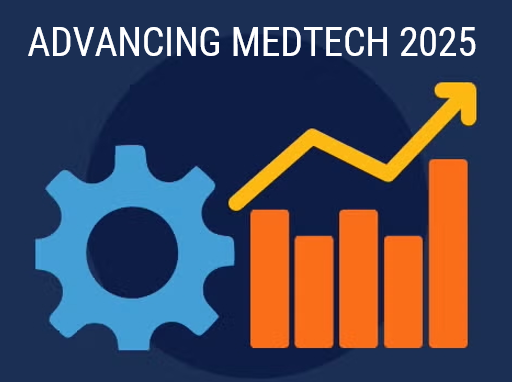The Agile MedTech Lifecycle: Rethinking Regulatory Adoption in a Time of Global Disruption
The industry’s heavy reliance on waterfall project management has resulted in long, siloed, and high-risk product development cycles. This model does not accommodate evolving regulations, shifting geopolitical realities, or fast-changing healthcare needs. The post The Agile MedTech Lifecycle: Rethinking Regulatory Adoption in a Time of Global Disruption appeared first on MedTech Intelligence.

Introduction:
A Wake-Up Call from Recent History
Between fiscal years 2012 and 2022, the U.S. FDA recorded over 26,000 medical device recalls, consistently ranking medical devices among the top product categories for recalls—surpassing cosmetics and biologics in many years (Source: U.S. FDA, Medical Device Recall Database, 2023). This underscores a systemic challenge: traditional medical device lifecycles are rigid, slow to respond to emerging risks, and lack real-time monitoring capabilities.
Meanwhile, Europe’s transition to the new Medical Device Regulation (MDR) has left thousands of devices uncertified as of Q3 2023 due to limited notified body capacity, complex clinical requirements, and manufacturer readiness gaps. A MedTech Europe survey indicated that less than 50% of certificates had transitioned by late 2023 (Source: MedTech Europe, 2023).
Ongoing geopolitical disruptions such as post-Brexit regulatory divergence and the expiration of the Mutual Recognition Agreement (MRA) between Switzerland and the EU continue to drive regulatory fragmentation, requiring parallel approvals and increasing costs (Source: European Commission, 2023).
The Problem:
A Rigid, Risk-Prone Development Model
The industry’s heavy reliance on waterfall project management has resulted in long, siloed, and high-risk product development cycles. This model does not accommodate evolving regulations, shifting geopolitical realities, or fast-changing healthcare needs.
Key Shortcomings:
Inflexible Planning
Delays caused by late-stage clinical requirements or regulatory changes can derail go-to-market strategies. For example, a 2021 FDA case study highlighted cybersecurity compliance challenges as a major contributor to delayed approvals in Class II neurology devices (Source: FDA Medical Device Cybersecurity Guidance, 2021).
Lack of Regulatory-Project Synergy
There is a growing demand for MedTech project managers trained in both regulatory strategy and lifecycle execution (Source: RAPS Executive Survey, 2023).
Compliance Burden
Regulatory preparation and documentation account for a significant portion of early-stage costs. A 2017 study published in the Journal of Medical Devices estimated regulatory-related expenses represent up to 77% of the total cost of bringing a Class II device to market in the U.S. (Source: Makower, Meer, Denend, 2017).
Who’s Affected
| Manufacturer Type | Description | Disruption Faced |
| Global incumbents | Large multinationals with extensive portfolios | Slowed by complex legacy systems and multi-jurisdictional oversight |
| Emerging-market innovators | Companies in developing regions seeking global expansion | Struggle with Western regulatory frameworks |
| Startups & mid-tier firms | VC-backed or SMEs with narrow product lines | Limited runway to absorb delays and high compliance costs |
Fact: Bringing a Class II device to market in the U.S. costs about $31M, with 77% spent on regulatory compliance alone (Source: AdvaMed, 2022).
Phases of the Agile Lifecycle
Phase 1: Critical-Need Launch
This phase enables early, limited access to medical devices under compassionate or emergency use programs when traditional options are unavailable. Devices are used in high-risk or critical-care scenarios, often under conditional approvals. The aim is to gather early safety and performance data in real-world settings.
Examples of aligning regulatory pathways:
FDA Breakthrough Devices Program (USA, introduced 2018) – Established under the 21st Century Cures Act and operational in 2018; by 2022, breakthrough devices obtained clearance 3.7 months faster than standard 510(k) routes (Source: FDA, 2022).
FDA Expanded Access (USA, pilot since 2006) – In 2021, over 1,200 patients accessed investigational devices, reducing time-to-care by 4 months (Source: FDA, 2021).
EU MDR Certificates with Conditions (EU, effective May 2021) – Allows CE marking for 15% of previously uncertified devices pending PMCF (Source: MedTech Europe, 2022).
Japan Sakigake Pathway (Japan, established 2015) – By 2022, 45 products saw 30% faster review times (Source: PMDA, 2022).
Phase 2: Interventional Expansion
Devices are deployed in broader controlled clinical settings, expanding from critical use to high-impact interventions. Real-world evidence (RWE) is collected via registries and digital surveillance. This phase refines clinical claims and informs payer discussions.
Examples of aligning regulatory pathways:
FDA Total Product Lifecycle Advisory (USA, launched 2020) – Iterative feedback improved review predictability by 20% (Source: FDA TPLC Pilot, 2021).
PMCF Registries under EU MDR (EU, mandated 2021) – 70% compliance among Class IIb registries in year one (Source: MDCG, 2021).
TGA Clinical Evidence Guidelines (Australia, updated 2022) – Study on high-risk devices showed a 12% recall reduction (Source: TGA, 2023).
Phase 3: Full-Scale Adoption & Reimbursement
With robust RWE, devices achieve market authorization and broad reimbursement. Post-approval surveillance and cost-effectiveness data drive long-term access.
Examples of aligning regulatory pathways:
CMS Coverage with Evidence Development (USA, established 2006) – CED saved $150M over five years by managing payer exposure (Source: CMS, 2020).
NICE Evaluation Pathway (UK, launched 2009) – 80% of evaluated devices met cost-effectiveness within 2 years (Source: NICE, 2021).
NMPA RWE Pilot (China, since 2021) – 10 devices cut approval times by 25% through local RWE (Source: NMPA, 2023).
Real-World Evidence: The Cornerstone
Real-World Evidence (RWE) refers to clinical data derived from routine healthcare interactions—namely electronic health records (EHRs), patient registries, and insurance claims. These data sources enable continuous monitoring of device performance, safety, and effectiveness post-approval, creating a feedback loop that informs iterative improvements in product design and regulatory decisions.
EHR Data: Comprehensive patient outcomes captured in EHRs allow rapid identification of safety signals. For example, analysis of 15,000 cardiac monitoring cases led to design refinements within 6 months, reducing adverse event rates by 22% (Source: JAMA Cardiology, 2022).
Registry Data: National joint replacement registries support post-market evaluation and device iteration. The UK National Joint Registry reported a 30% reduction in revision surgeries over three years after iterative implant design updates (Source: National Joint Registry UK, 2021).
Claims Data: Insurance claims analytics reveal real-world utilization patterns. A 2022 Medicare claims study identified off-label use trends for a novel diabetes management device, prompting label modifications and improving therapy adherence by 12% (Source: Medicare Claims Analysis, 2022).
These RWE pipelines underpin conditional approval pathways, allowing regulators and manufacturers to manage risk dynamically and prioritize patient safety throughout the device lifecycle.
Benefits of Agile MedTech Lifecycle Adoption to Stakeholders
Patient Access Tiers: Prioritizes compassionate use for last-resort patients, followed by emergency use authorizations, then broader applications in expanding clinical contexts, and ultimately mass-market deployment supported by reimbursement pathways.
Regulators: Gain continuous, real-time safety and performance data via RWE, reducing signal detection time by up to 50% and backlog of review cases (Source: FDA TPLC Pilot, 2021). Gain continuous, real-time safety and performance data via RWE, reducing signal detection time by up to 50% and backlog of review cases (Source: FDA TPLC Pilot, 2021).
Manufacturers: Shorten R&D cycles by 25–40%, achieve early revenue through conditional market entry, and lower capital burn via staged investment (Source: Deloitte MedTech Outlook, 2023).
Investors: Benefit from milestone-based funding tied to iterative deliverables and RWE milestones, reducing overall investment risk by approximately 30% (Source: EY Health Sciences, 2022).
Payers & HTAs: Access robust, real-world cost-effectiveness data early, enabling value-based reimbursement decisions that can lower overall treatment costs by 20% (Source: IQVIA Real-World Report, 2022).
Healthcare Providers: Obtain early access to innovative therapies backed by RWE, improving patient outcomes (e.g., 22% reduction in adverse event rates in early cardiac monitoring programs) (Source: JAMA Cardiology, 2022).
Distributors & Suppliers: Enable phased inventory management and service provision, reducing warehousing and logistics costs by up to 15% (Source: McKinsey Pharma Ops, 2021).
Patients & Advocacy Groups: Receive faster access to potentially life-saving technologies, often 6–12 months sooner than under traditional models, with enhanced safety oversight (Source: Deloitte, 2023).
Key Recommendations to Stakeholders
To realize the full potential of the Agile MedTech Lifecycle, coordinated actions are needed across all stakeholder groups. Below are detailed recommendations with supporting facts and examples:
Regulators
1. Expand conditional and adaptive approval programs to scale early patient access.
Example: The FDA’s Breakthrough Devices Program led to a 3.7-month faster market clearance timeline on average (Source: FDA, 2022).
2. Promote global harmonization efforts to reduce regulatory redundancy and streamline multi-market approvals.
Example: Joint regulatory initiatives like the Access Consortium have shown a 25% reduction in duplicative reviews across member countries (Source: HSA, 2022).
3. Fund shared post-market registries and RWE infrastructure to support smaller firms.
Manufacturers
1. Develop integrated agile project teams with regulatory, R&D, and data science capabilities.
2. Adopt PMCF automation tools for continuous evidence collection and regulatory alignment.
Example: Companies using AI-based PMCF platforms reduced manual reporting burden by 40% (Source: Deloitte, 2023).
3. Engage early and frequently with regulators through rolling submissions and pre-submission meetings.
Payers & HTAs
1. Implement conditional reimbursement models tied to ongoing RWE collection and real-world performance.
Example: NICE’s Early Value Assessment Pathway provided preliminary guidance and funding for technologies that demonstrated early-stage value (Source: NICE, 2023).
2. Develop value-based procurement criteria that reward iterative innovation and post-launch performance.
Investors
1. Structure funding in milestone-based tranches tied to clinical validation and regulatory feedback.
2. Invest in shared RWE analytics infrastructure to support portfolio companies’ compliance.
Example: Venture-backed firms with early-stage RWE support demonstrated a 30% higher follow-on funding success rate (Source: EY Health Sciences, 2022).
Healthcare Providers
1. Participate in observational trials and registries to support post-market learning.
2. Integrate device usage data into clinical dashboards to support data-driven care decisions.
Example: Hospitals using integrated dashboards for cardiac monitors observed a 22% drop in adverse events (Source: JAMA Cardiology, 2022).
Distributors & Suppliers
1. Build modular service and logistics models aligned to phased launches.
2. Support training and technical support services that evolve with each stage of the product lifecycle.
Patients & Advocacy Groups
1. Advocate for access to breakthrough and conditionally approved therapies.
2. Engage in RWE initiatives by contributing to surveys, feedback platforms, and outcomes reporting.
Example: Patient-reported outcomes have informed labeling changes in over 40 FDA approvals between 2017–2022 (Source: FDA Patient Engagement Report, 2022).
By aligning around these roles, the MedTech ecosystem can successfully operationalize agile development principles—delivering safer, more adaptive, and equitable healthcare technologies to patients worldwide. Agility in MedTech is essential. By embracing this model, the industry can deliver safer, faster, and more cost-effective innovations—ensuring MedTech’s resilience and responsiveness in a volatile world.
The post The Agile MedTech Lifecycle: Rethinking Regulatory Adoption in a Time of Global Disruption appeared first on MedTech Intelligence.




























































































































































